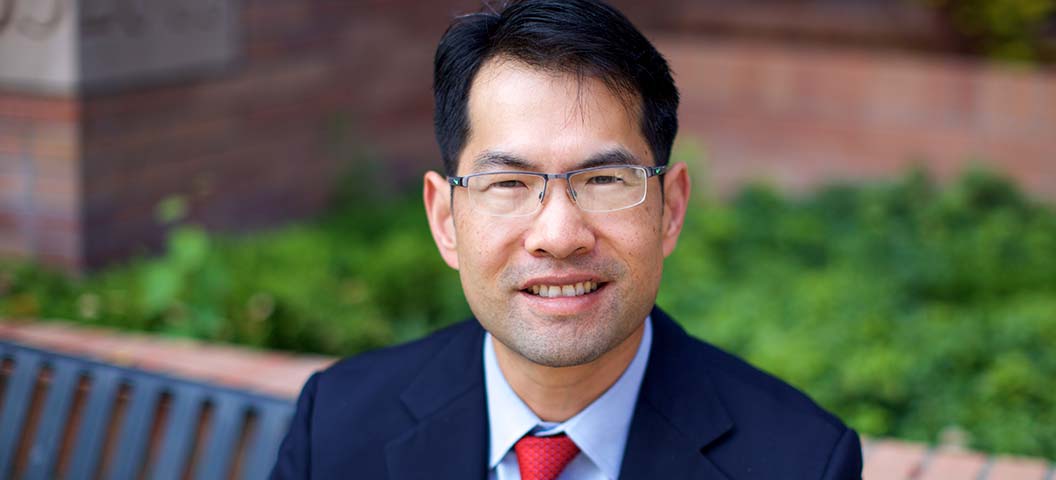
Bridging the gap between cancer drug target and cancer drug
Fred Hutch Cancer Center prostate cancer researcher and medical oncologist Andrew Hsieh, MD, was recently named a 2024 Harrington Scholar-Innovator.
The two-year, $100,000 award, from the Harrington Discovery Institute (HDI) at University Hospitals in Cleveland, will support Hsieh’s efforts to turn an experimental compound into a drug. He is working to target the elevated RNA translation and protein synthesis processes that fuel many tumors, including advanced prostate cancer.
“Our compound works well. It could work better — but I’m not a medicinal chemist,” Hsieh said. “That’s where the HDI comes in. The idea is to take our compound to the next level, to move it toward the clinic.”
The HDI was established to accelerate development of promising medicines for unmet needs. Scholar-Innovator Awards go to physician-scientists with innovative and creative research that demonstrates a high potential for clinical impact. Scholar-Innovators receive funding to improve their therapeutic strategies and guidance during the drug and business development process. They also have the opportunity to compete for further drug and business development funding.
RNA translation: Drug target in search of a drug
Hsieh studies the role that protein synthesis, the process of using RNA molecules to build proteins, plays in cancers of the prostate and bladder. Previously, he and his team discovered that when advanced prostate tumors turn off the androgen receptor (which helps them evade powerful AR-targeting cancer therapies), they step up protein synthesis. This helps fuel tumor growth in the absence of AR activity. Hsieh’s group found blocking protein synthesis hampers tumor growth.
Other cancer types also leverage protein production to drive growth, he said.
“Protein synthesis is very important in cancer,” Hsieh said.
He noted that work by others, including Fred Hutch colleagues, has revealed its importance in a range of tumors, including bladder cancer, pancreatic cancer and skin cancer. And, he said, “there’s precedence to inhibiting certain aspects of that process.”
The U.S. Food and Drug Administration has already approved one protein synthesis inhibitor, called omacetaxine mepesuccinate (Synribo), for treatment of chronic myelogenous leukemia in patients whose tumors develop resistance to standard therapies.
But for the most part, efforts to move protein synthesis inhibitors to the clinic have fizzled.
Hsieh’s team had shown that blocking an interaction between the proteins that begin the RNA-translation was critical to hampering growth in AR-low prostate tumors. But available inhibitors are only appropriate for research use; they don’t meet the tolerability and specificity standards needed for a safe, effective cancer therapy.
“We built off the mechanistic work we’ve done over the years and asked a simple question: Could we develop a therapeutic with more drug-like features?” Hsieh said.
Funding to turn a compound into a drug
To find a candidate inhibitor with translational promise, Hsieh and his team combined a commercially available artificial intelligence-assisted process with validation in preclinical models of prostate cancer and RNA translation.
The AI-assisted screen surveyed 2.7 million compounds with “drug-like” properties and narrowed the pool down to 131 potential inhibitors. Tests in prostate tumor cells winnowed this pool down to just one. It’s promising: Prostate tumor cells, but not normal prostate epithelial cells, are sensitive to it.
But the compound still needs refining before it can be tested in people.
Hsieh’s HDI funding will support the medicinal chemistry needed to improve the compound. If successful, this may pave the way for clinical tests, including a first-in-human phase 1 clinical trial at Fred Hutch.
“This is the start of a long road,” Hsieh said. “We’ve jumped one critical hoop, and we’re ready for the next one.”